It’s been more than 35 years since beer makers stopped using the pull tabs that littered beaches and cut people’s feet, yet you might still come across one of these cans lying in the woods undergoing its slow process of decomposition.
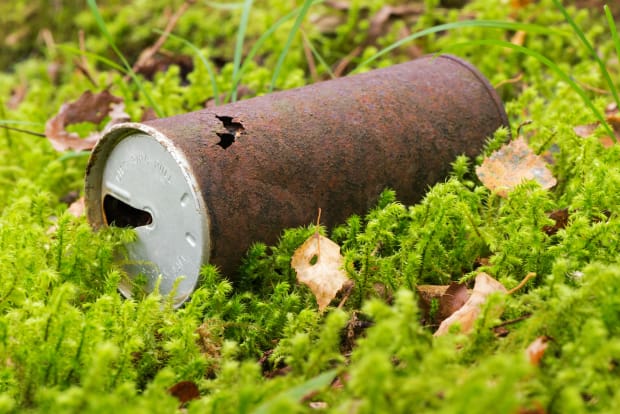
Of the estimated 50 billion pieces of litter on the ground in the U.S., 24 billion are along roadways and 26 billion are along waterways, according to a 2021 litter study by Keep America Beautiful. That’s equivalent to 152 items of litter for each U.S. resident.
Most Americans understand that litter negatively affects the environment, waterways, property taxes, home values, tourism and businesses, quality of life, and the health and safety in their communities, according to the litter study. The study also found:
- The single most littered item is cigarette butts, even though cigarette butt litter has declined dramatically since 2009.
- Plastic films, both general use films and food-packaging films, such as candy wrappers or snack bags, represent the second and third most littered items in America.
- There is twice as much litter from alcoholic beverage containers as from non-alcoholic beverage containers. Beer container litter is up 27% from 2009.
- Beer containers and single-serve wine and liquor containers are among the most frequently littered items.
There are many products we buy every couple of years, every month, every week and every day—and a lot of them will take several lifetimes to decompose.
Many of these items are recyclable, or could simply be replaced by more sustainable options, yet they end up in landfills, where decomposition is even slower. One of the biggest waste products Americans send to landfills is food waste, and all of it could be commercially composted if municipalities had composting programs, but only about 12% of the U.S. population has access to municipal curbside composting.
Here’s how long some common items take to decompose in the environment:

Train Tickets
2 weeks

Wax Paper:
2-4 weeks
Organic waxes, such as soybean wax, take about two weeks or a month to start breaking down in the environment. Paraffin usually takes longer.
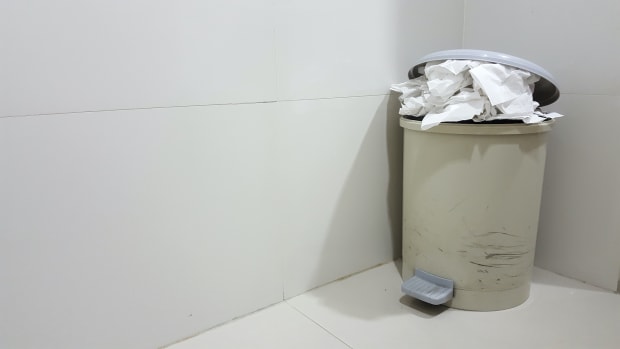
Paper Towel:
2–4 weeks

Paper:
Up to 6 weeks
Based on volume, paper is one of the largest items in American landfills.
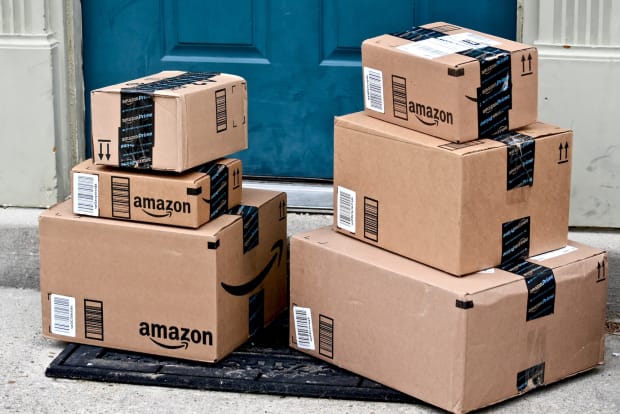
Cardboard:
2 months
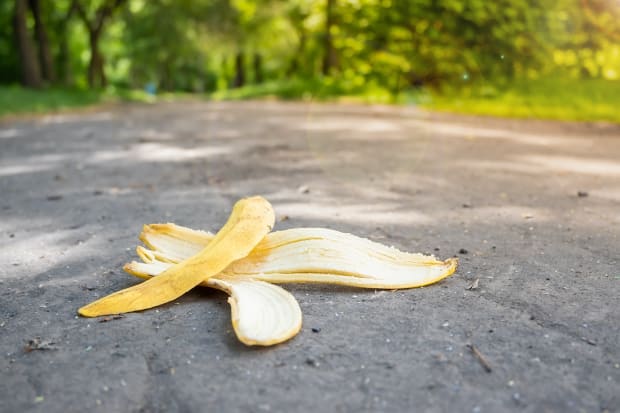
Banana Peel or Apple Core:
1 month
By weight, food is one the largest waste items in American landfills. Each American throws away an average of 220 pounds of food a year. About 76% of food waste ends up in landfills, but could be composted. The time taken for food waste to decompose depends on the type of food.

Orange Peel:
6 months

Cotton Glove:
3 months

Rope:
3-14 months
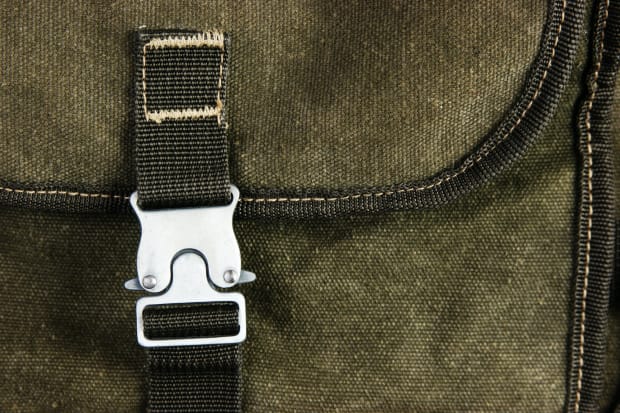
Canvas Products:
1 year

Plywood:
1-3 years
Wood is the No. 1 category of solid waste, according to the EPA, and does not even include waste from construction projects.

Wool Clothing:
1-5 years
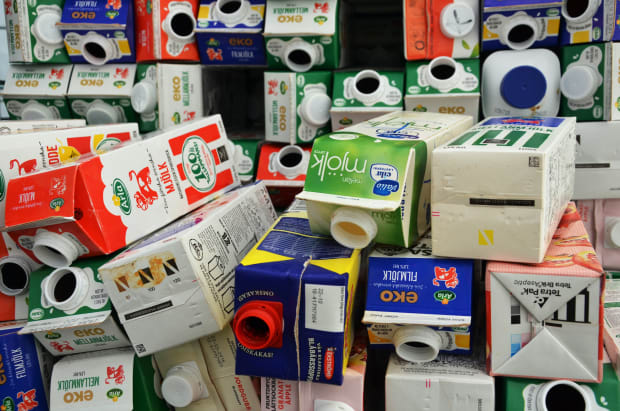
Milk Cartons:
5 years

Cigarette Butts:
5-10 years
Cigarette butts release deadly chemicals that accumulate in the the soil and waterways, passing up into the food chain to wildlife. They are the most common type of litter on the planet, with an estimated 4.5 trillion discarded annually, according to research.

Painted Boards:
13 years
Wood that is treated, painted or varnished can't really be recycled, according to Recycle Nation. Pressure treated lumber, particleboard and chipboard contain glues or other toxic chemicals, rendering it impossible to safely recycle, and they shouldn't be burned in a fireplace or fire pit either. The best option for these woods is to reuse them in some way.

Lumber:
10-15 years
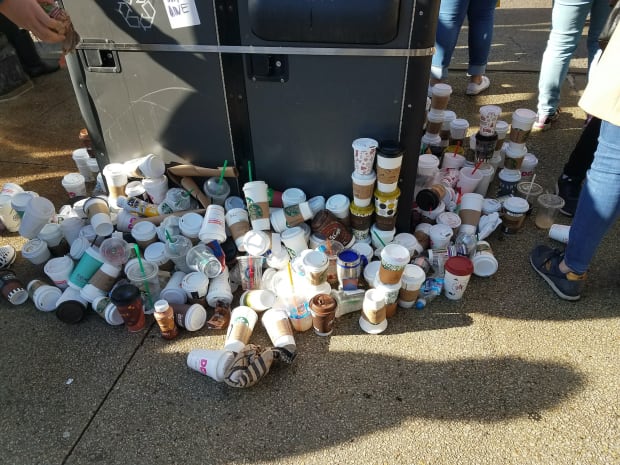
Paper Coffee Cups:
20 years
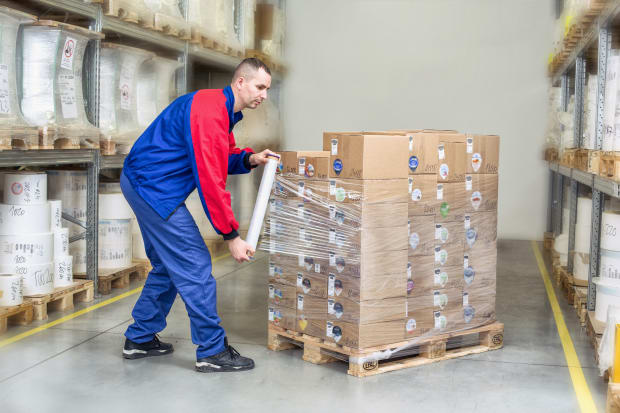
Plastic Film:
20-30 years
This includes plastic wrap and cling wrap used for food.
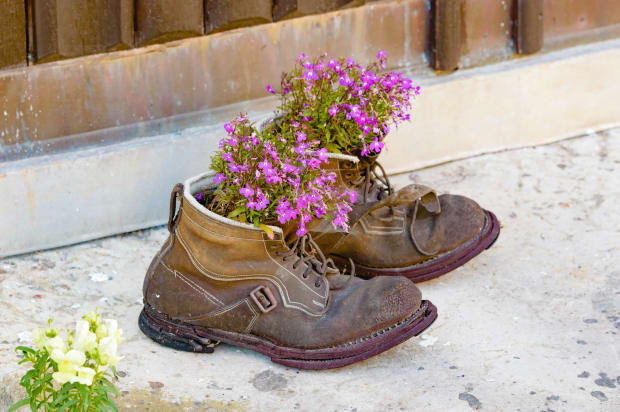
Leather Shoes:
25-40 years

Nylon Fabric:
30-40 years
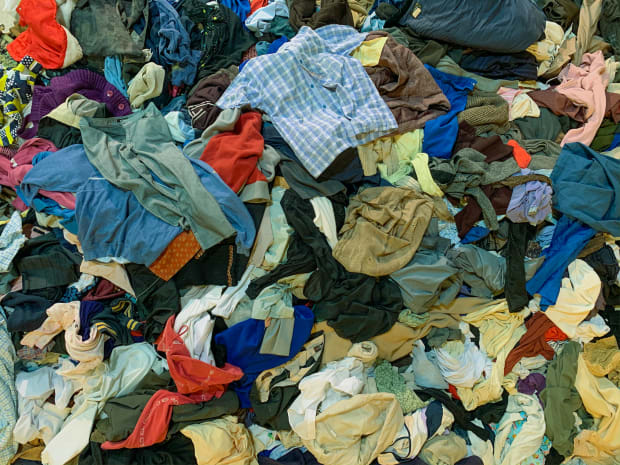
Clothing:
40 years
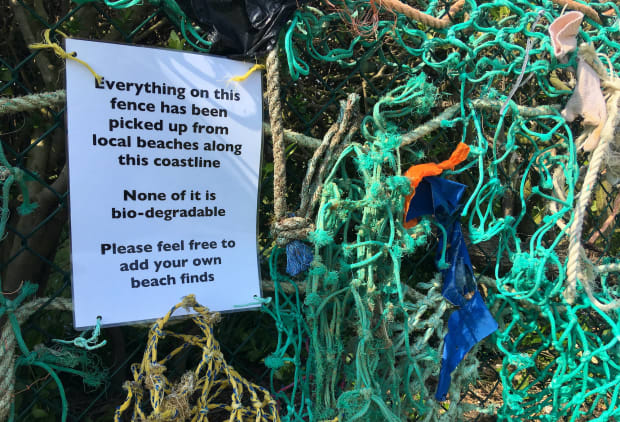
Nylon Fishing Net:
40 years
Nylon is a type of plastic made from petroleum. Wildlife often die from being entangled in discarded nets. Nylon can be reused, but not fully recycled.

Rubber Boot Sole:
50-80 years
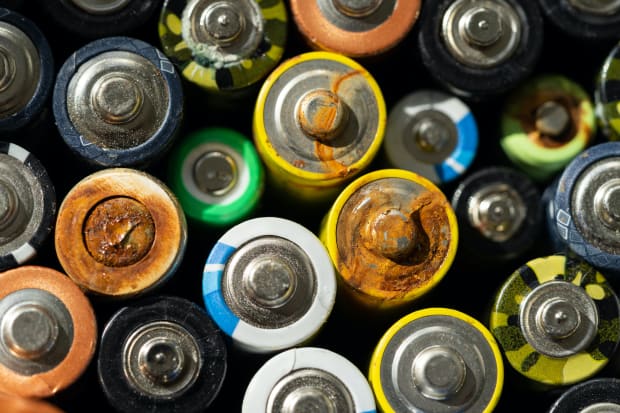
Batteries
100 years
Batteries release toxic materials into the soil and waterways as they break down. Single-use batteries can be recycled. Many office-supply stores, hardware and home improvement stores, including Home Depot, accept batteries for recycling.
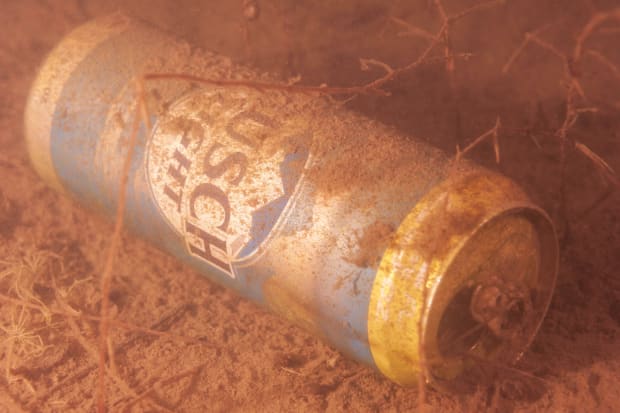
Aluminum Cans:
80-200 years in landfills
Aluminum is very recyclable, and a valuable scrap material. In fact, a used aluminum can is typically recycled directly into a new can. And yet, the consumer recycling rate for aluminum beverage cans was just 46.1% in 2019, according to a report by the Aluminum Association.
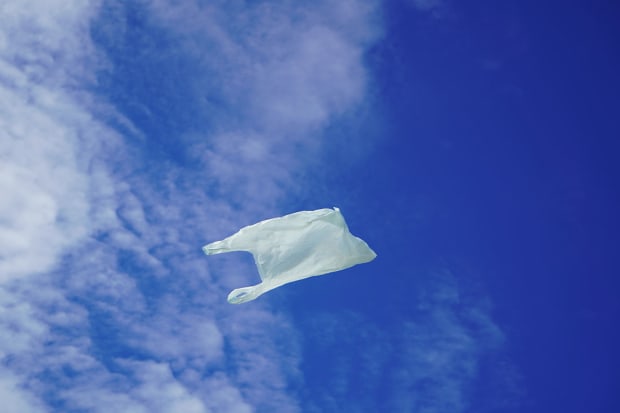
Plastic Bags:
200-500 years
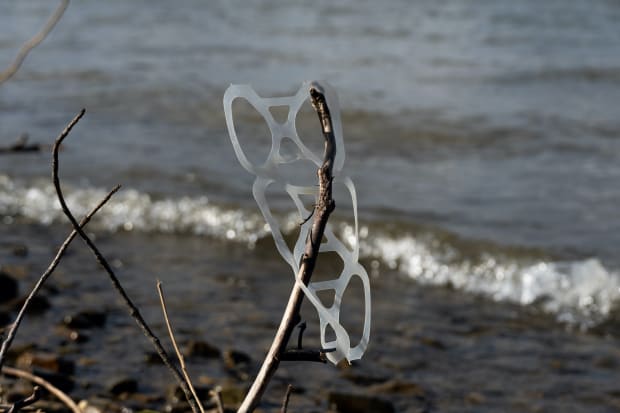
Plastic Six-Pack Rings:
450 years
These rings are notorious for trapping, disfiguring and killing land and marine animals. More companies have been eliminating the rings and using alternatives.
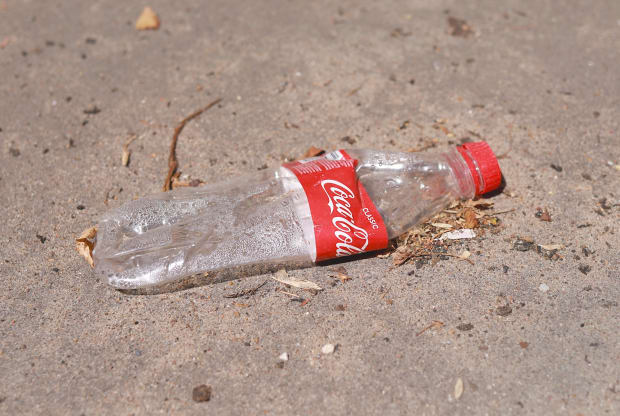
Plastic Bottles:
450 years
Plastic items can take up to 1,000 years to decompose in landfills.
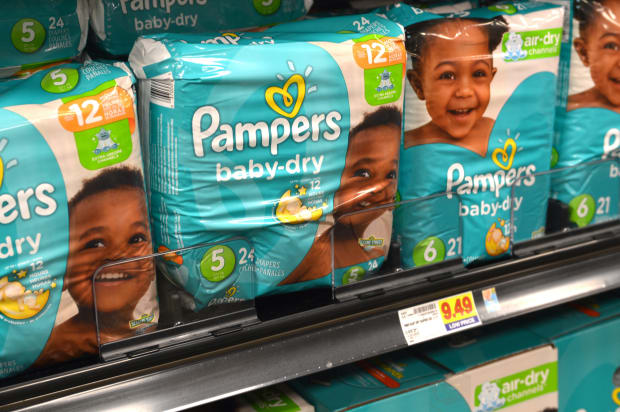
Disposable Diapers:
550 years
In the U.S., more than 18 billion disposable diapers are thrown away every year.

Sanitary Pads:
500-800 years

Monofilament (Fishing Line)
600 years
Although there are alternatives to partially recover and reuse monofilament fishing line, the process is not widely used. As it accumulates in the environment, discarded fishing line entangles, traps and kills wildlife. There are biodegradable fishing lines, and while some estimates say that the polylactic acid in biodegradable fishing lines will decompose within three months, that’s not much help for the wildlife that have gotten caught in it or ingested it.
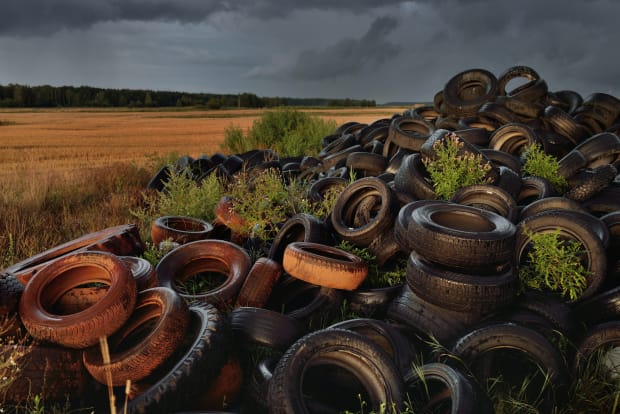
Tires:
2,000 years
Tires contain oils that contaminate the soil; they also consist of heavy metals such as lead that can persist in the environment and accumulate over time. Despite reuse and recycling efforts, a large amount of scrap tires end up in landfills each year, and they create problems for landfills, too. Tires are often dumped or stockpiled, and according to the EPA, tire piles are prone to heat retention and can ignite, creating tire fires that are difficult to extinguish and can burn for months.

Glass
1 million years, or possibly never
Glass is made from sand and is easy to recycle. By melting broken glass we can produce new glass. But it might never decompose in landfills or the environment. Pictured is a Pepsi bottle found in Chernobyl.

Styrofoam, Polystyrene:
Never
The trademarked name Styrofoam is often used for all foamed polystyrene products, though the structure is different. These various types of foam products are made from a number of dangerous chemicals including benzene (a type of carcinogen) and styrene. Because it takes so long to break down, foam products effectively will never decompose. It's still used for insulation, packing material, surfboards, food packaging, automobile parts, road stabilization systems, and cups.
Sources: South Carolina Dept. of Natural Resources, the Northeast Illinois Council, and BBC Science Focus.







